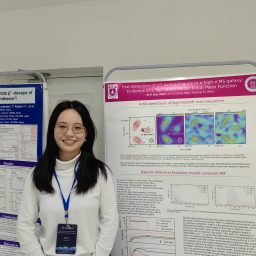First detection of CO isotopologues in a high-redshift main-sequence galaxy: evidence of a top-heavy stellar initial mass function
Ziyi Guo (School of Astronomy & Space Science, Nanjing University)
Tuesday 26/03/2024 @ 14:00, Sala Antonio Sollima (IV piano Battiferro)
Recent observations and theories have presented a strong challenge to the universality of the stellar initial mass function (IMF) in extreme environments. A notable example has been found for starburst conditions, where evidence favours a top-heavy IMF, i.e. there is a bias toward massive stars compared to the IMF that produces the Milky Way values. Local starburst galaxies have star-formation rates similar to those in high-redshift main-sequence galaxies, which appear to dominate the stellar mass budget at early epochs. However, the IMF of high-redshift main-sequence galaxies is yet to be tested. Because the 13CO and C18O isotopologues are sensitive to the IMF, we have observed these lines towards four strongly-lensed high-redshift main-sequence galaxies using the Atacama Large Millimeter/sub-millimeter Array. Of our four targets, SDSSJ0901+1814, at z~2, is seen clearly in 13CO and C18O, the first detection of CO isotopologues in the high-redshift main-sequence galaxy population. The observed 13C/18O ratio, 2.4 ± 0.8, is significantly lower than that of local main-sequence galaxies. We estimate the isotope ratio, oxygen abundance and stellar mass using a series of chemical evolution models with varying star-formation histories and IMFs. All models favour an IMF that is more top-heavy than that of the Milky Way. Thus, as with starburst galaxies, main-sequence galaxies in the high-redshift Universe have a greater fraction of massive stars than a Milky-Way IMF would imply.

